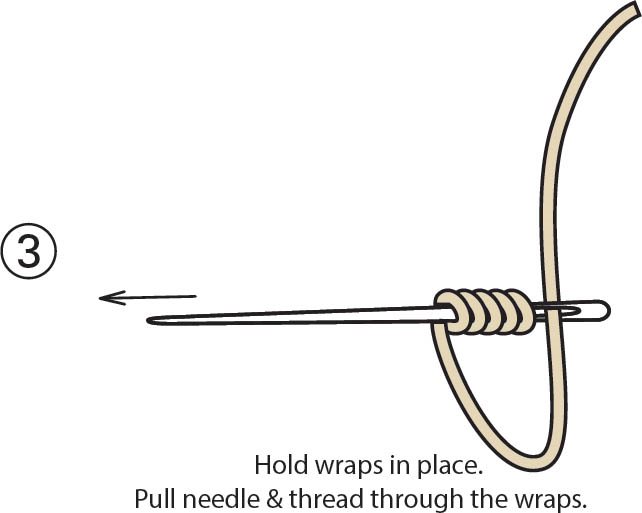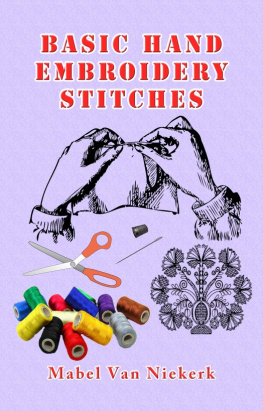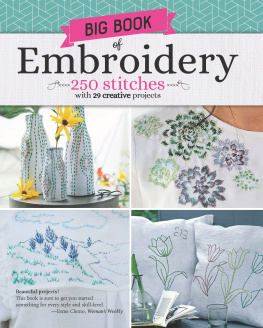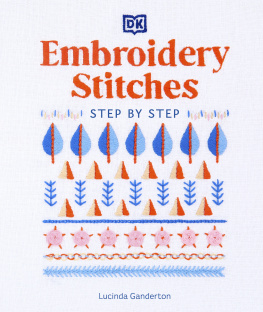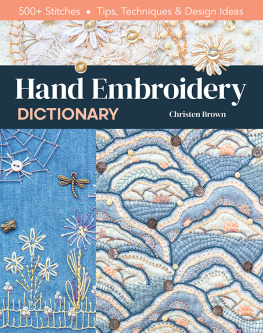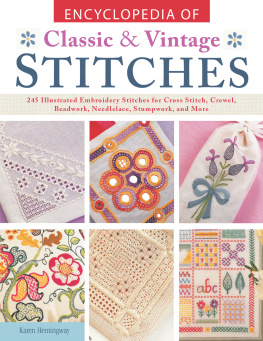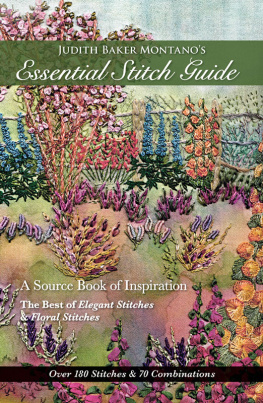Table of Contents
Information from The Art of Elegant Hand Embroidery, Appliqu & Embroidery Fundamentals, and Embroidery & Patchwork Revisited
Copyright 2014 by Fox Chapel Publishing Company, Inc., 903 Square Street, Mount Joy, PA 17552.
Landauer Publishing, landauerpub.com , is an imprint of Fox Chapel Publishing Company, Inc.
978-1-935726-59-3
Printed in Singapore
Needle and Thread Use

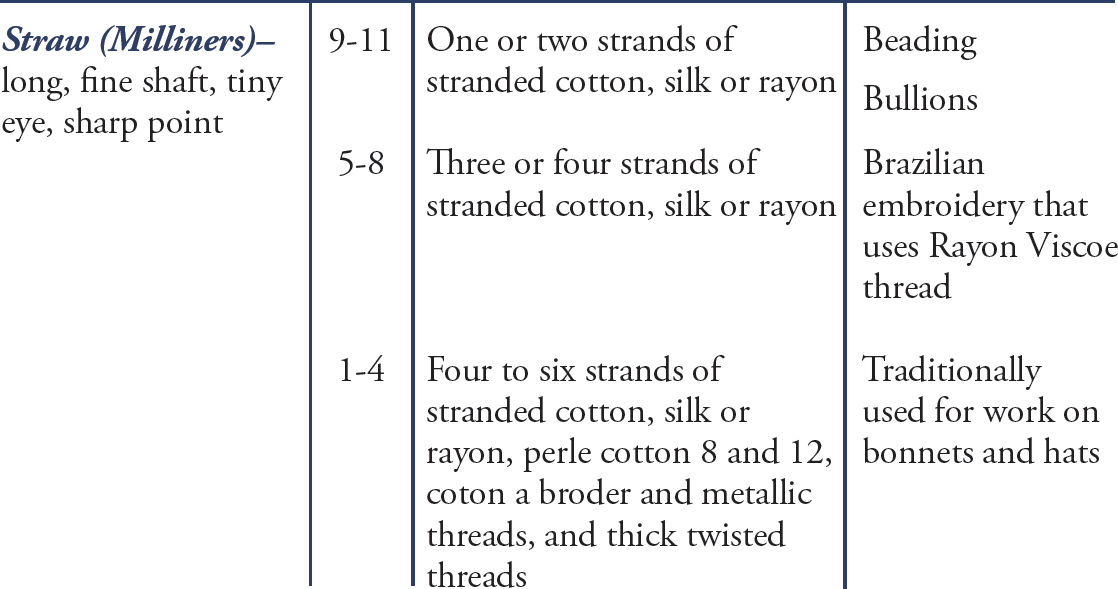
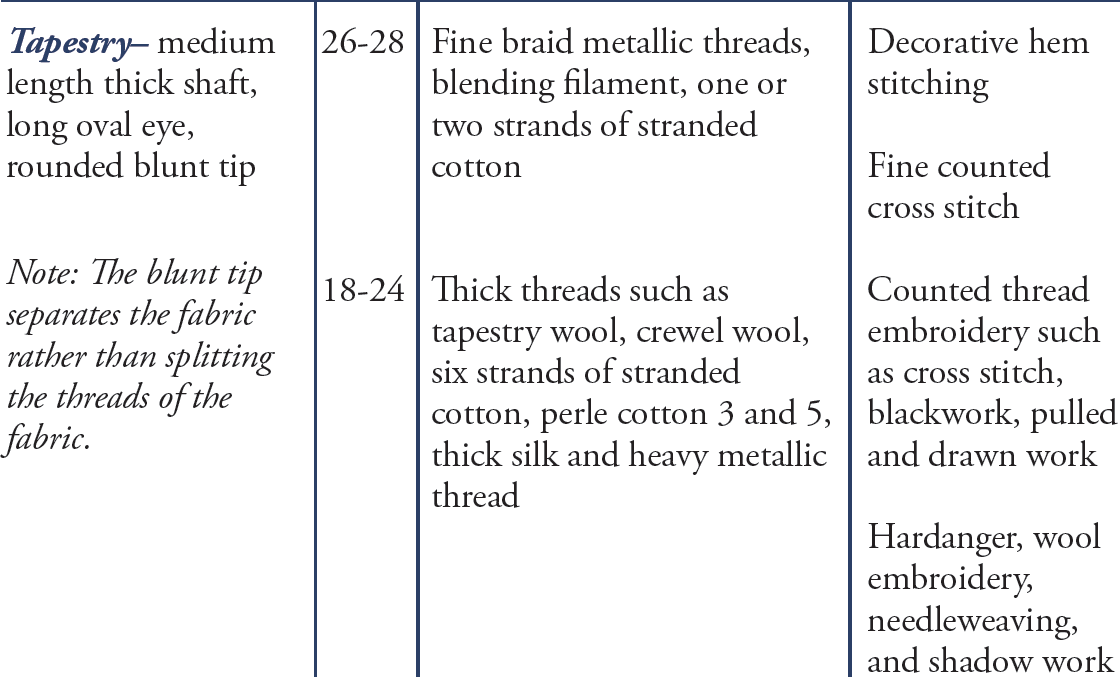
Threads
Stranded Cotton (embroidery floss) very versatile thread that typically consists of six fine strands. It can be divided to use one to six strands or blended with different colored threads.
Stranded Silk typically consists of 12 fine strands of thread. Very high sheen. It is used the same way as stranded cotton.
Perle Cotton a single strand of twisted mercerized cotton. It is excellent for textured effects. Available in 3 (heavy), 5, 8, and 12 (fine).
Soft Embroidery Cotton a matte thread with a soft, muted appearance. Good for interlaced or whipped stitches.
Coton a Broder a single strand of cotton thread available in sizes 12, 16, 20, 25, 30, and 35. Also available in a wide range of colors.
Metallic real or synthetic fiber available in a wide range of weights and texture. It can be used with other threads to highlight stitches.
Crewel Wool fine, 2-ply yarn that can be used singly or in multiple strands.
Persian Wool available in stranded form that can be used as a single thread or combined.
Tapestry Wool single strand that is good for couching.
Knitting Yarns available in wool, cotton, and synthetic fibers that are good for couching.
Rug Wool heavyweight wool yarns good for couching.
Backstitch


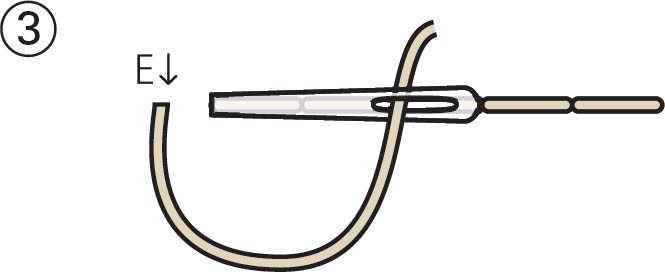

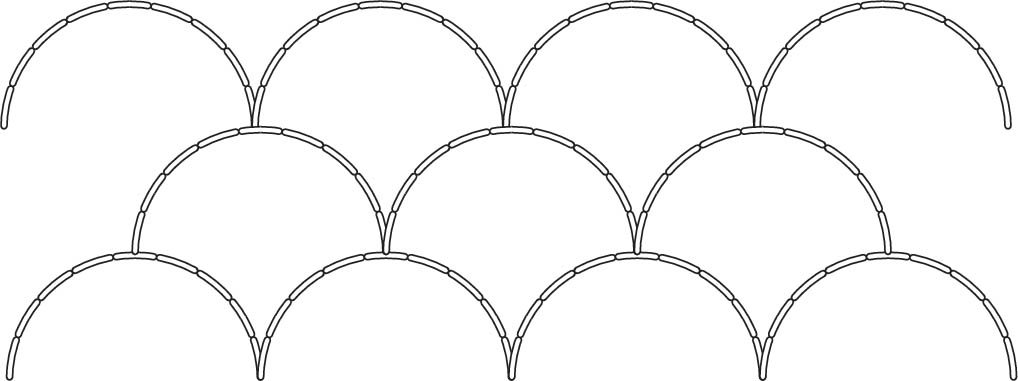
Bring the needle and thread to the front at A, approximately " from the beginning of the stitching line. This distance is the stitch length. Take the needle to the back at B, which is the beginning of the stitch line. Re-emerge approximately " beyond A at C. Pull the needle and thread through the fabric to complete the stitch.
Take the needle to the back at A in exactly the same hole. Re-emerge at D, " from C. Pull the needle and thread through the fabric to complete the stitch.
Continue working stitches following step 2. To end, take the needle and thread through the hole at the beginning of the previous stitch (E) and secure on the back.
STITCH OPTION:
Use a quilting stencil design, such as the clamshell pattern, and Backstitch with Perle cotton to add texture to fabric.
Blanket/Buttonhole Stitch



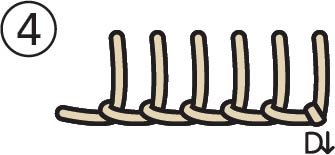
When there is spacing between the vertical stitches it is considered a Blanket Stitch. When the vertical stitches lay next to each other, or side by side, it is considered a Buttonhole Stitch.
The stitch is worked from left to right over two imaginary horizontal lines. Bring the needle and thread up at A on the imaginary lower line. Take the needle down at B on the imaginary upper line and out at C on the imaginary lower line. Keep the working thread under the tip of the needle.
Pull the needle and thread through the fabric forming a loop.
Continue making the vertical BC stitches with the working thread under the tip of the needle on each stitch.
To end, take the needle and thread to the back at D and secure.
Braid Stitch


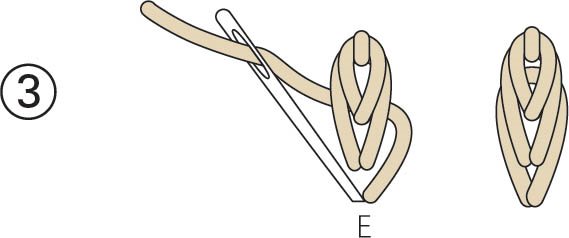
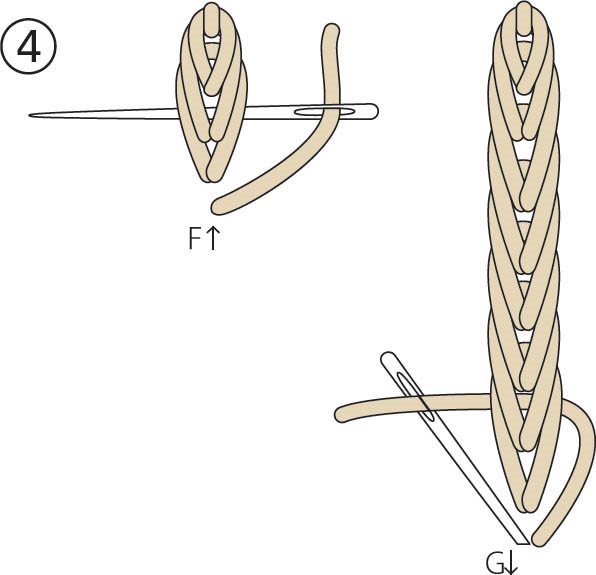
Bring the needle and thread to the front at A. Take the needle down at A and out at B with the working thread under the tip of the needle forming a chain. Take the needle and thread down at C. The BC stitch anchors the chain.
Bring the needle and thread up at D. Slide the needle and thread from right to left under the BC anchor stitch. Do not pierce the fabric or Chain Stitch. Take the needle and thread down at D.
Bring the needle and thread up at E, just below D. Slide the needle from right to left under the first and second Chain Stitches. Do not pierce the fabric. Take the needle and thread down at E.
Continue working the Braid Stitch, coming up below the last chain. Slide the needle from right to left under the two previous Chain Stitches, then take the needle and thread down where the thread came up. To end, take the needle and thread to the back at G and secure.
Bullion Stitch


